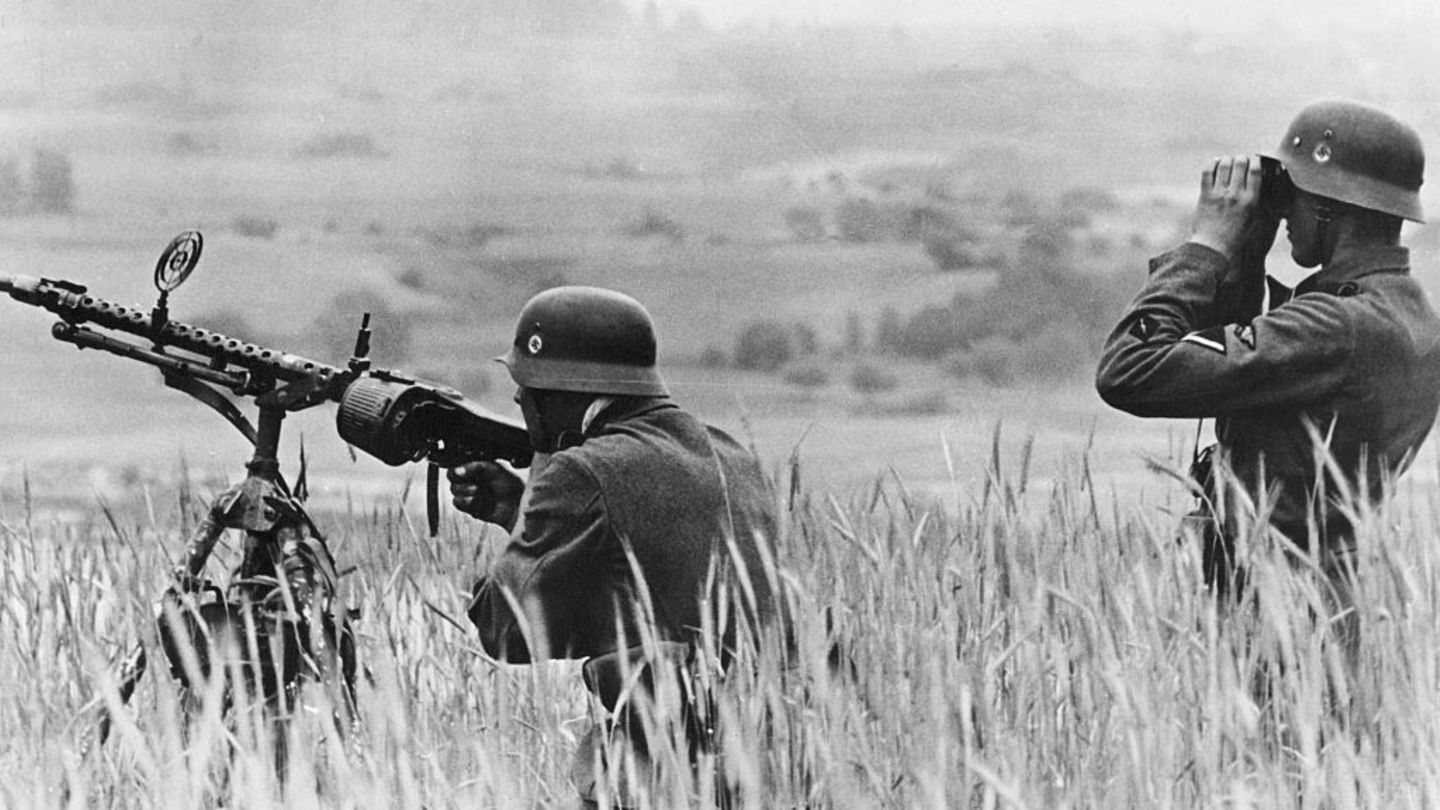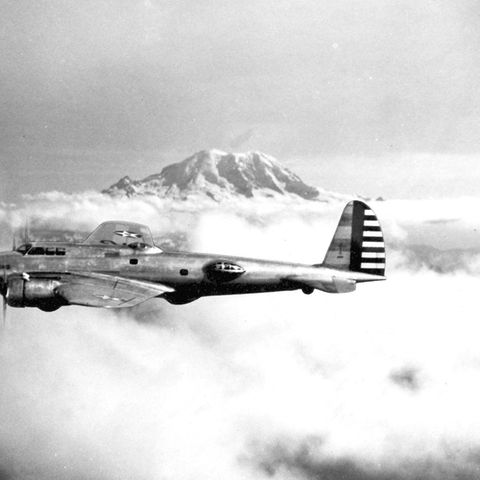The battle for Bautzen 1945
The last victory of the Wehrmacht – a senseless victim
Copy the current link
Add to the memorial list
Shortly before the end of the war, the Wehrmacht defeated the Red Army near Bautzen – a last triumph that costs over 17,000 people.
This article was first published by ntv.de
At noon on April 21, 1945 there were dense swaths of smoke over Bautzen. Detonations and rifle shots in the streets of the eastern Saxon city resonate, while the Soviet storm troops around the house are fighting into the center. But unlike in Berlin, where Hitler’s troops are shortly before the final defeat, the sheet turns here.
“In the battle for Bautzen, the German Wehrmacht won one last but meaningless victory,” says historian Stefan Maximilian Brenner in an interview with NTV.de. The “local success” did not affect the course of the war, but instead thousands of people still cost life. “It was a pointless sacrifice,” summarizes the historian at the army command.
In the planning of the German and Soviet leaderships, a military clash in Bautzen plays no role. The main focus is on Berlin. On April 16, 1945, the Red Army on the Oder on the army of the army set to the storm on the imperial capital. At the same time, the 52nd Soviet army and the 2nd Polish army cross the Neisse and push in the direction of Dresden to East Saxony. Your job is to cover the southern pliers of the “Berliner Operation”. One of the milestones: Bautzen.
Battle is due to chance
The superiority of the Soviets and Poland seems overwhelming with more than 120,000 soldiers. But appearance is deceptive. The 52nd army under commander Konotentin Koroteev is weakened by past battles. It looks insignificantly better with the poles: they lead 400 tanks from Soviet stocks into the field. However, under General Karol świerczewski, mostly inexperienced and poorly trained soldiers serve. In addition, both armies cannot fall back on large reserves. These are needed for the offensive on Berlin. The Red Army in East Saxony does not expect noteworthy resistance.
But that’s a mistake. The 4th Panzer Army is the defense of Upper Lusatia with around 50,000 men under General Fritz-Hubert Gräser. Under his command, there are some Nazi floral associations such as the parachute tank division Hermann Göring and the PanzergrenadierDivision Brandenburg. Gräser’s divisions are decimated and only have the strength of battalions. In addition, ammunition and fuel are scarce. But the 4. Army still has 350 armored vehicles – more than the defenders of Berlin.
“The German troops were deeply demoralized in this final phase of the war,” says Brenner. “Nevertheless, many soldiers continued to fight. They feared the stand dishes who convicted flags to death within a very short time.” In addition, the Nazi propaganda spread actual but also invented atrocities about Red Armymists and thus fueled the will to fight one last time. “The fear of revenge for previous German crimes in the east also played a role.”
Flank attack by the Wehrmacht surprises the Poles
First of all, everything runs as planned for the Red Army. After crossing the Neisse, the 52nd and the 2nd army break through the thin German lines of defense. Apart from briefly flaming attempts to defend, the Wehrmacht does not seem to be able to resist. The towns of Muskau and Rothenburg are overrun, Weißenberg falls after a short fight.
On April 19, Soviet troops reach Bautzen and boil the city. Around 1200 defenders of Wehrmacht, Volkssturm and Hitler Youth are entrenched at the Ortenburg, a medieval castle complex on the banks of the Spree. A surrender of those enclosed only seems to be a matter of time.
While the street fights are still raging in Bautzen, Polish units make their way to Dresden. With the high pace of the tip of the attack, the rebel cannot keep up and falls back. This is not hidden. The general conducts his troops into the gap of the Polish associations.
The German counterattack at Niesky hits the Poles completely unprepared. Świerczewski loses the overview and initially only lets only part of his attack on the attack so as not to be cut off. But his poorly trained officers make tactical mistakes. The Polish troops are disordered and suffer serious losses. The advance on Dresden is a minor matter.
While świerczewski’s army is reorganized, German reconnaissance teams are spotting a large accumulation of Polish forces at Förstgen and Weigersdorf. In the rush, Gräser ordered his units to another attack.
Massacre on both sides
“The hour of revenge has come! In concentric attacks we will destroy the Bolshevik soldates!”, Gräser heats up the mood in his daily command on April 22nd. “The Soviets are encircled. Salvated to them what they have done to our people! Now there is no more sorry!”
Gräser’s men take their commander at the word. In Guttau, German soldiers murder doctors, nurses and the wounded of a Polish field hospital, in Horka (then Wehrkirch) they change 300 Polish wounded. At Wuischke, a field gendarmerie troop of the “Großdeutschland” tank corps in a forest kills 80 unarmed people by head shot. The victims are Soviet prisoners and German flagpoles.
“This field gendarmerie unit was either on direct arrangement or at least with Gräser’s consent,” says historian Brenner. “The squad didn’t even bother to burst the corpses.” There are not only massacre on the German side. At Niederkaina, Soviet soldiers address around 200 folk stormers.
After the successful German flank attacks, the Soviet attackers in Bautzen are also in trouble. On April 23, German soldiers reach the city and fall in the back of the units of the 52nd army. In order not to be encircled yourself, the last Red Armymists withdraw from the city three days later and dodge to the north. At this point, Weißenberg is again under German control. The battle is decided – the region around Bautzen will remain in the hands of the Wehrmacht by the end of the war.
The losses are considerable. The 2nd Polish army and the Soviet 52nd army count around 11,000 dead and 21,000 wounded. Around 6,500 soldiers fall on the German side, plus 9,000 wounded. Two weeks after the victory at Bautzen, the Wehrmacht surrounds unconditionally. The slaughter is over.
Like NTV, the star is part of RTL Germany.
Source: Stern
I have been working in the news industry for over 6 years, first as a reporter and now as an editor. I have covered politics extensively, and my work has appeared in major newspapers and online news outlets around the world. In addition to my writing, I also contribute regularly to 24 Hours World.






